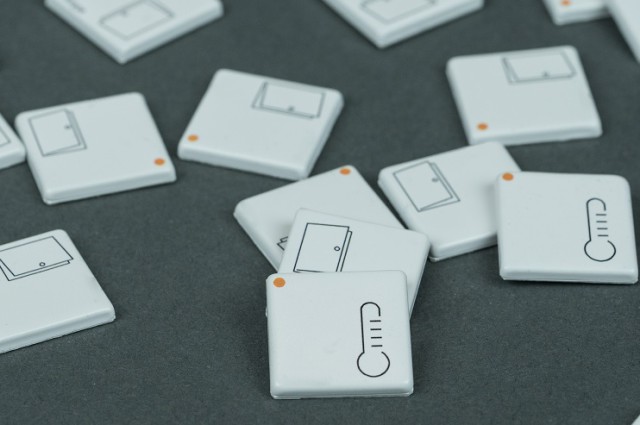Internet of Things: A power enabler of building sustainability

Many enterprises place sustainability at the very top of their strategic agenda and plan their long-term growth in ways that consider their wider ecological and socio-economic environment. In this context, the smart buildings and facilities management industry provides unprecedented opportunities for improving a company’s sustainability.
Facilities managers leverage smart building technologies to provide a comfortable, healthy, and productive environment to their tenants. Sustainable buildings deliver this comfort and productivity in a resource efficient and environmentally responsible manner.
The Business Value of Sustainability
Sustainable buildings exhibit exceptional environmental performance, which is the reason why they are commonly characterised as “green” buildings as well. However, the concept of sustainability goes beyond environmental friendliness. Sustainable facilities consider not only the need to save the planet, but also the needs of tenants and businesses. Specifically, sustainable buildings are set to maximise the comfort of the tenants and boost the long-term economic growth of businesses. In this direction, sustainable buildings are developed based on a holistic approach that considers architectural, planning, design, construction, operations, maintenance and demolition aspects at the same time. For instance, a sustainable design strives to benefit the most from sunlight and natural ventilation, while taking advantage of eco-friendly materials. As another example; sustainable building operations aim to maximise energy efficiency and minimise waste.
This holistic approach delivers many benefits to modern facilities and their users. As a prominent example, resource efficient operations lead to significant cost savings for building owners and tenants. Moreover, sustainable buildings boost the brand value of their owners, while increasing the loyalty of the tenants. Furthermore, they ensure the facility’s compliance to green regulations, such as the new energy conservation code in New York City.
Sustainability Goals and KPIs
When it comes to building sustainability, the choices of building owners and facilities managers matter. Facilities managers must set and pursue ambitious sustainability goals, striving for:
- Energy efficiency (“Net Zero Energy”): Sustainable buildings minimise their energy needs through energy efficient operations. Facilities managers strive to minimise the energy consumption of building assets and operations. For instance, HVAC (Heating Ventilation and Air Conditioning) systems must consume the least energy possible, while LED (Light Emitting Diode) lighting must be deployed as widely as possible. At the same time, facilities managers try to benefit from onsite production of energy leveraging renewables and other forms of clean energy. The ultimate vision of a facilities manager is to achieve a “Net Zero Energy” goal i.e., to cover energy needs using onsite energy production.
- Water efficiency: A sustainable facility must also boost water consumption efficiency. In this direction, facilities managers can employ various strategies aiming at reducing indoor potable water use, use of non-potable water for irrigation application, and minimising water waste due to problems in the infrastructure (e.g., leakages).
- Waste Management Optimisation: Waste management is one of the most important sustainability strategies for modern facilities. Specifically, facilities managers strive for maximising the amount of waste that is recycled. This requires the deployment of waste recycling systems, yet it is also associated with eco-friendly procurements (e.g., the use of products that can be recycled).
Building sustainability is a marathon rather than a sprint race. It requires long term commitment to eco-friendly technologies and practices. Therefore, it is also important for property owners and facilities managers to track sustainability performance by means of proper KPIs (Key Performance Indicators). Sustainability KPIs can be used to track progress and to compare a facility’s performance to the industry average. In the former case, measures like energy consumption (e.g.,kilowatts (kW) and BTUs (British Thermal Use)and energy cost can be tracked internally. In the latter case, there is a need for KPIs that compare performance to industry averages such as indicators calculated in the scope of the Commercial Buildings Energy Consumption Survey (CBECS) in the USA. Leveraging such KPIs, building owners and facilities managers can create their own sustainability rating system, as a means of tracking their performance and boosting a continuous improvement discipline.

IoT Technology Enablers for Building Sustainability
Facilities managers employ many different processes to boost the sustainability of buildings and other properties. In the area of waste management for example, they tend to perform regular waste audits that help them understand and remedy the gaps of their waste management processes. Likewise, they train tenants on waste management activities, while incentivising them to engage in eco-friendly behaviours like recycling. As another example; in energy management they try to use HVAC and lighting only when and where needed.
Modern technologies are facilities managers best ally when it comes to implementing the above-listed processes towards achieving ambitious sustainability targets. Specifically, Internet of Things (IoT) technologies enable facilities managers to access data about people, assets, and spaces in the building towards optimising the use of resources, reducing emissions, and minimising carbon footprint. Such data can be acquired pervasively, automatically and in real-time. Facilities managers leverage data analytics to extract unique sustainability insights and KPIs about the operations of their buildings. These insights can be used to drive optimisations in energy management, water management, and waste management. Prominent IoT use cases for buildings’ sustainability include:
- Room Occupancy Monitoring: Leveraging IoT sensors it is nowadays possible to monitor the occupancy of offices and other spaces to plan for optimal energy usage and space management. Instead of relying on heuristic assumptions about space occupancy, occupancy monitoring enables facilities managers to make educated decisions about the resources needed in each space of the facility. This use case is trending during COVID19, where usual office occupancy patterns are disrupted due to work-from-home policies.
- Energy Usage Optimisation: The pervasive monitoring of the spaces’ conditions by means of IoT sensors enables facilities managers to optimise the operation of energy-intensive systems (e.g., HVAC systems). Using IoT analytics over data about the condition and occupancy of the spaces, facilities managers can derive optimal energy usage patterns and shape their sustainability strategies accordingly.
- Predictive and Condition based Maintenance of assets: IoT enables the implementation of condition-based monitoring and predictive maintenance of physical assets like machinery, pumps, and HVAC systems. Predictive maintenance repairs or replaces assets based on their actual end of life. This improves overall equipment efficiency and reduces the carbon emissions (CO2) that stem from equipment malfunctions.
- Boosting Tenants’ Health and Comfort: Leveraging occupancy patterns and pervasive monitoring of the tenants’ behaviors, facilities managers can optimise comfort and health for their tenants. In corporate buildings this boosts the productivity of employees as well.
- Tracking KPIs for Performance Management and Compliance: With IoT technologies, data gathering can be performed automatically, continually and remotely. Therefore, IoT provides facilities managers with effective ways for calculating and tracking sustainability KPIs. It also helps them monitor regulatory compliance, produce relevant reports and avoid the risk of regulatory penalties.
IoT technology is without doubt a powerful tool for achieving sustainability goals. It’s a tool facilities managers and buildings’ sustainability managers should add to their armoury on their sustainability journeys.
Pippa Boothman is VP Marketing & Communications at Disruptive Technologies







